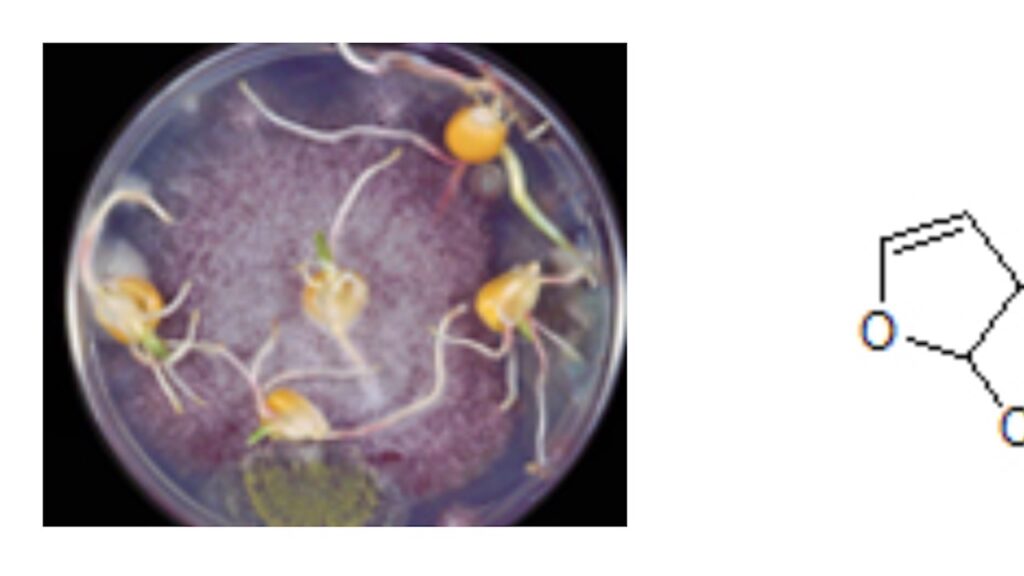Mycotoxins are toxins produced by molds (fungi) and can accumulate in crops, where they pose health hazards to humans and animals. Mycotoxins are estimated to affect 25% of the world’s crops and cost US agriculture approximately $1 billion each year.
Mycotoxin groups
Trichothecenes


Trichothecenes are produced by multiple fungi, but those produced by the fungus Fusarium are of greatest concern to human and animal health, because of the widespread occurrence of these toxins in cereal crops. When some Fusarium species infect crops, such as barley, corn and wheat, they can produce trichothecenes in infected grain. If humans or animals eat trichothecene-contaminated grain, they can experience health problems, including vomiting, hemorrhaging in the digestive tract, nausea, diarrhea, and fever. The trichothecenes of greatest concern to US agriculture are: deoxynivalenol, diacetoxyscirpenol and T-2 toxin. Contamination of wheat with the trichothecene deoxynivalenol is particularly important problem in the upper Midwest of the US, and other wheat-growing regions of the world, including in Canada, Europe and Asia. Within human and animal cells, trichothecenes inhibit formation of proteins. Because proteins are required for virtually all essential physiological processes, it makes sense that trichothecenes can have numerous negative effects on human and animal health.
Fumonisins


Fumonisins are also produced by multiple fungi, but production by the fungus Fusarium is of greatest concern to human and animal health. Fumonisin contamination has been reported in multiple crops, including onion, rice and wheat, but contamination in corn is most significant in terms of impacts on health and agriculture. Fumonisins can induce multiple fatal diseases in animals, including fluid in lungs of pigs, lesions in the brains of horses, as well as cancer and deformation of the brain, spine and spinal cord in experimental mice and rats. There are also correlations between the consumption of fumonisin contaminated grain and cancer of the esophagus and deformation of the spinal cord is some human populations for which corn is a dietary staple. All these toxic effects of fumonisins are thought to result from the ability of the toxins to inhibit the formation of a class of fatty acid-derived metabolites known as sphingolipids. In humans and animals, sphingolipids are required for many physiological processes. This is most likely the reason why fumonisins have so multiple toxic effects.
Zearalenone


Zearalenone is produced by multiple species of the fungus Fusarium and is found in cereal crops such as barley, corn, oats, rice, sorghum and wheat. This mycotoxin interferes with the effects of the animal and human hormone estrogen. Zearalenone is particularly a problem in swine/pigs where it can cause infertility, miscarriages, and other problems with reproduction.
Aflatoxins


Aflatoxins are one of the most potent naturally-occurring carcinogens. These toxins are found as contaminants in multiple crops, including corn, peanuts, almonds and walnuts. They are produced by multiple species of the fungus Aspergillus, but production by Aspergillus flavus and A. parasiticus is of greatest concern. When animals eat aflatoxin contaminated feed they can become sick, and they can pass the toxins to eggs, milk and meat. MPM does research on methods for aflatoxin detection, but most aflatoxin research funded by the USDA is conducted at other locations, including Southern Regional Research Center in New Orleans, National Peanut Research Laboratory in Dawson, Georgia, the Western Regional Research Center in Albany, California, and the Jamie Whitten Delta States Research Center in Stoneville, Mississippi.
Produced and published by the U.S. Department of Agriculture. Last Modified: July 13, 2018


